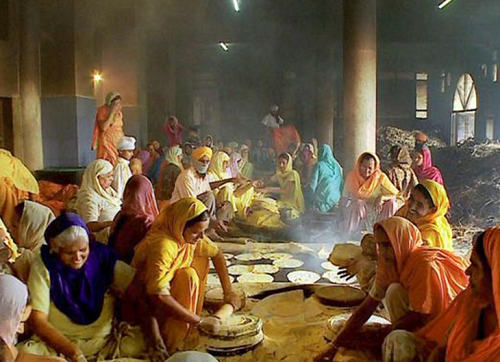Harmandir Sahib/ Golden Temple in Punjab: Cuisine
This is a collection of articles archived for the excellence of their content. Readers will be able to edit existing articles and post new articles directly |
Golden Temple in Punjab: Cuisine
Harmandir Sahib or Darbar Sahib, famously known as the Golden Temple, is one of the best-known Gurdwaras of the country. This Gurdwara is not only filled with the purity and serenity of gurbani recital but also with the people waiting for ‘Guru Ram Das Langar’ after the prayers. Open 24 hours, 365 days, this langar (a term used in a Gurdwara for serving food to the devotees) is named after the fourth guru of the Sikh community and welcomes everybody without any discrimination based on cast, creed or religion.
The people who cook and serve the food here are not expert chefs, but volunteers who want only blessings in return. The Gurdwara has a team for everything, such as a team of men in saffron turbans dragging the wheat sacks and hundreds of women rolling chapattis (flatbreads). There are groups of people for washing plates – a cleaning team. They clean up after almost 70,000 people every single day.
The women in the kitchen roll chapattis and the men toss them onto big, flat hotplates, flipping them using long, hooked rods. Another group picks the baskets of cooked chapattis and run out to the eating area to serve. A few people stir the dal (lentils) and vegetables in big handis (pots). Apart from dal and chapattis, volunteers also serve rice, vegetables and one milky sweet. The food is not complete without a cup of tea, which is served at the end of meal. There is no fixed time for lunch and dinner as the langar is open all the time and for everyone – from beggars to the richest of rich – who eat, pray and learn to live together.
